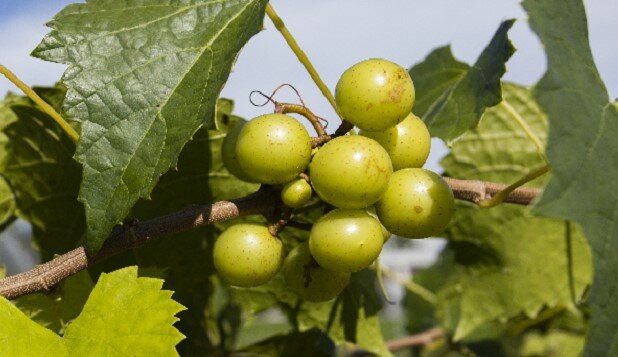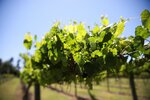UF/IFAS harvesting first crop of potentially disease-resistant wine grapes
The first crop of Pierce’s disease-resistant grapes at UF/IFAS’s Plant Science Research and Education Unit in Citra, Florida, showed no signs of disease. The University of California Davis …
This item is available in full to subscribers.
Attention subscribers
To continue reading, you will need to either log in to your subscriber account, below, or purchase a new subscription.
Please log in to continueDon't have an ID?Print subscribersIf you're a print subscriber, but do not yet have an online account, click here to create one. Non-subscribersClick here to see your options for subscribing. Single day passYou also have the option of purchasing 24 hours of access, for $1.00. Click here to purchase a single day pass. |
UF/IFAS harvesting first crop of potentially disease-resistant wine grapes
The first crop of Pierce’s disease-resistant grapes at UF/IFAS’s Plant Science Research and Education Unit in Citra, Florida, showed no signs of disease. The University of California Davis developed the grape variety, and UF researchers are working to prove the grapes can be grown effectively in Florida, thereby giving the state a boost to its nascent wine industry, said UF/IFAS associate professor Ali Sarkhosh.
This could open the door to more traditional wine operations in Florida, rather than exclusively muscadine wine, which is easier to grow in Florida’s climate.
“We see these grapes are doing well,” he said. “It is very exciting. It could be a really great opportunity for agro-tourism.”
Pierce’s disease, caused by bacteria, has been a formidable challenge for viticulture, especially in hot, humid climates like Florida. The disease, spread by insects, stops the water-spreading vessels inside grapevines, leading to severe water stress and vine death. The disease costs vineyards hundreds of millions of dollars a year. So far, no method has been found to prevent the disease, making genetic resistance a critical focus for researchers.
In the 1920s, grapes covered the Florida landscape, but Pierce’s disease – among other factors – wiped out most of the industry. The disease causes leaves to wilt, turn yellow and fall off, and the fruit shrivels. Given limited treatments, farmers are encouraged to remove plants that get Pierce’s disease to prevent it from spreading.
The grape of the south, especially in Florida, is the muscadine. It is one of the few grape varieties that perform well in the hot climate of the Southeast U.S. The native variety of muscadine is called “Scuppernong.” Here in Florida, it grows well in our poor soil conditions. It also benefits from being tolerant of our many insect pests and diseases.










